We have two or three elements of Abbott family lore and oral history on my father’s side of the family. The first takes us back in time to the root of the name — Abbott comes from Scots gaelic, MadNab, Mac an Aba, son of the Abbott — from the days of the Celtic church, when Abbotts often married and women played an active role in religion and ceremony …
“According to tradition the progenitor of the clan was Abraruadh who was the Abbot of Glen Dochart and Strathearn. Abraruadh was allegedly a younger son of Kenneth MacAlpin, the first king of Scots. … Abraruadh was also descended from Fergus, king of Dál Riata and a nephew of Saint Fillan, who was the founder of the monastery in Glen Dochart in the seventh century. …”
The second story is that there were four or five Abbott brothers who supported Cromwell in the Civil War and sailed for America in the conflict. Some time in the mid-1600s, they are said to have headed either for Massachusetts or for what would later become Virginia.
And the third is that if you walk into the Pomfret town hall, the one-room white clapboard building down the road from the dairy farm that my grandparents and great grandparents bought in the 1930s, and ask to see the original document from the Mashomoquet ‘purchase,’ when the first group of white Europeans ‘bought’ land along the Mashomoquet river, they’ll show you the names of those families — and two thirds of those names are Abbott.
We have never known whether we have any connection with them. Or where the Abbott brothers walked off the boat on this side of the Atlantic. Or who they were, and how and when they left Scotland.
It turns out that we’re not the only ones asking questions like that. We have some far-flung relatives out in the web who have been turning up some answers. And they may not look exactly the way we thought.
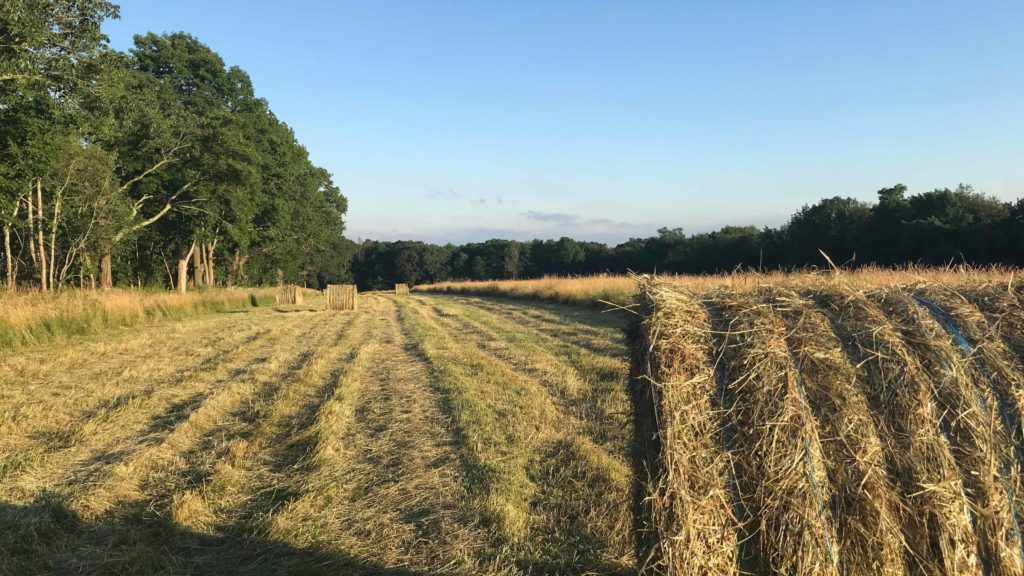
A Connecticut hayfield glows in afternoon light.
The part of the story we know starts in Indiana three generagions ago.
Wilbur Cortez Abbott was a young intellectual in Indiana in the 1890s — at a time when the states along the Mississippi were developing a cultural center. Georgia O’keeffe was studying art in Wisconsin and Chicago.
Wilbur’s cousin, Robert Holliday, became a journalist and essayist in New York and a friend of Joyce Kilmer (the fellow who never saw a poem as lovely as a tree … he was also an Irish-American New York journalist until he wound up on at the front in 1918), and Wilbur worked his way through college, and then to Cornell and Oxford, to become a historian of Oliver Cromwell and a professor at Sheffield Tech and at Harvard. And we know the story forward from there.
But following it backward has been harder …
Wilbur’s father was Thomas Washington Abbott (1828 to 1894) and Eleanor Laura Abbott. Thomas was the Indiana druggist who “had the great good sense not to go into business with Eli Lilly.”
Thomas W. was the won of Thomas Andrew Abbott (1795 to 1870) and Amanda Abbott (1807 to 1872). Amanda was German.
Thomas A. may have been the Abbott who first came to Indiana. He was the son of Nathan G. Abbott, Jr. and Cynthia Abbott (1770 to 1791). So it looks as though Cynthia died when she was 21 and he was probably a baby. I wonder if Cynthia was Nathan Jr.’s first wife, and he married again after she died. His second wife was Anna Johanna Abbott.
Thomas A. was half brother of Harry Abbott, Fanny Allen, George Abbott, John G. Abbott, Thomas K. Abbott, William K. Abbott, Franklin S. Abbott and Betsy Ann Abbott.
Here’s the sign of movement from the East.
Nathan G. Abbott Jr. was born in England on September 3, 1841, and died in Freehold, Pennsylvania. He was not the first Abbott in the family to come to the U.S. though — his father was born in the states.
And he was born in a place that turns out to have had Abbotts in it for generations.
Nathan Jr. was the son of Nathan Abbott (1721 to 1804) and Hepzibah Abbott (Brown) (1726 to 1790). Nathan Jr. seems to have been their only child.
And Nathan Sr. was born on April 11, 1721, in Andover, Essex County, Massachusetts.
Andover is going to turn out to have been an early colonial holding, abut 60 miles north and inland from Plimouth. And our Abbott ancestors are about to show up there for almost a hundred years.
Nathan was the son of Paul Abbott (March 28, 1697, to May 6, 1752) and Elizabeth Abbott (Gray) (March 28, 1700, to July 9, 1765).
Elizabeth and Paul were both born in Andover. They had a large family — Nathan was brother to William Abbott, Benjamin Abbott, Mary Holt, Sarah Ingalls, Isaac Abbot, Darius Abbott and Elizabeth Abbott. And take note … Elizabeth Abbott Gray died in Pomfret, Connecticut, on July 9, 1765.
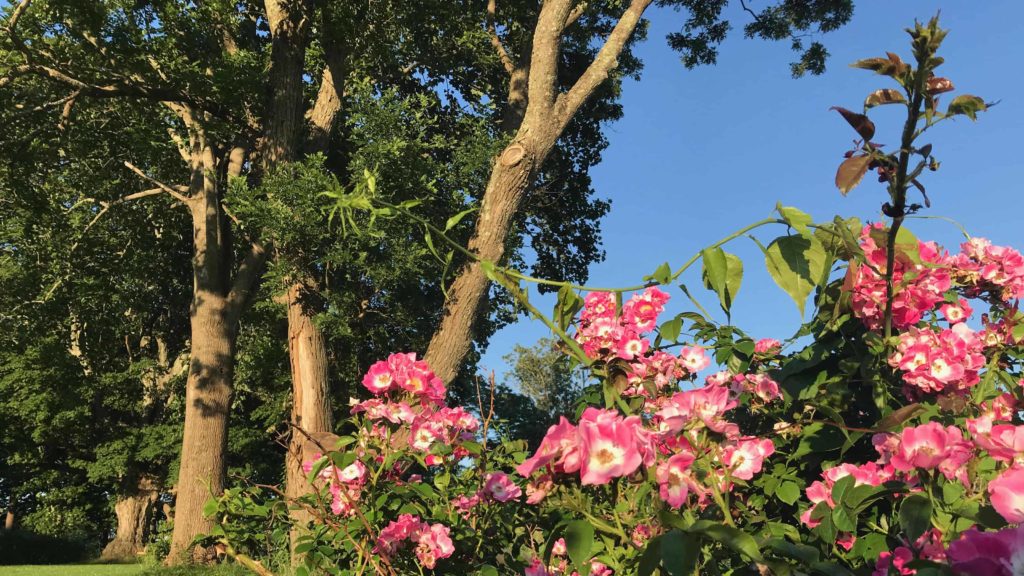
Roses bloom along the fence at the farm.
Pause here and remember the Abbotts who appear in the ‘Mashomoquet Purchase,’ the land deed that marks the coming of white colonists to the lands along the mashomoquet river. Those Abbotts arrived in the river valley here in 1686. So they would have been here for a generation when Elizabeth was born.
And while I don’t know where they all came from, or whether we are directly linked, Abbotts from Andover did come to Pomfret — even an Abbott who married into the Ingalls family, like Nathan’s sister Sarah, though a generation later.
“The Ingalls family were among the first settlers of Andover, Mass., coming to Pomfret in 1720. … Young James Ingalls was accompanied by his wife, Mary Stevens, a bride of a year, and his widowed mother, Hannah Abbott Ingalls, who brought her garden seed, on horse back, for her pioneer garden.
The first few years were lean ones in the pioneer country, and young James Ingalls often regretted leaving Andover, which in those days was an old settled section. Poor seasons and unrelenting labor so discouraged him that one day in despair he left his plow in the field, and returned to the house, determined to tell his young wife that they would give up and return to their native home. As he neared the house he heard her cheerfully singing about her work; her song cheered him.”
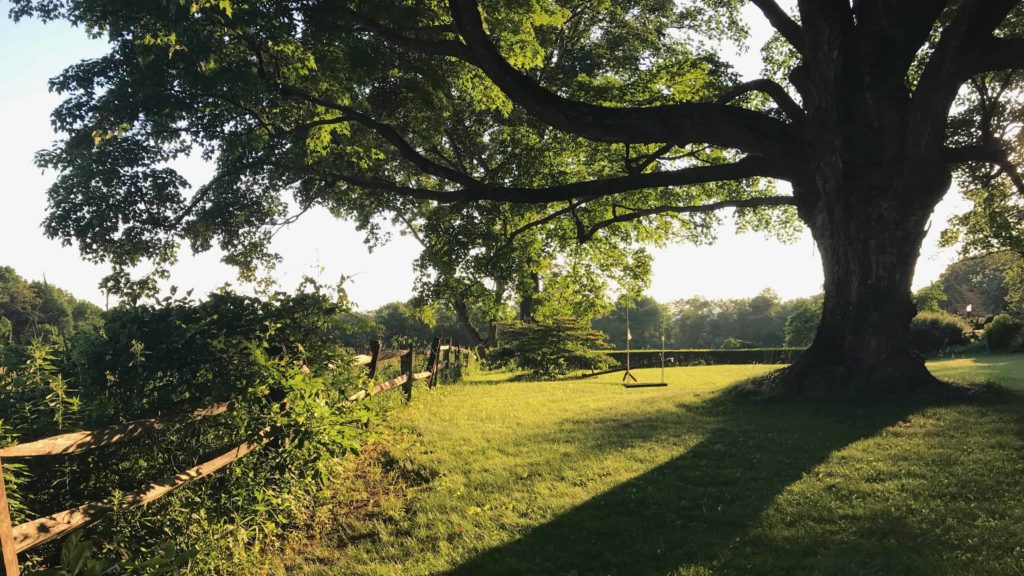
The maple tree by the south field glows at sunset.
At the time when those Abbotts were moving toward Mashomoquet, Nathan’s family was still growing roots in Andover.
Paul is the son of William Abbott (November 18, 1657, to October 21, 1713) and Elizabeth Abbott (Geary) (July 10, 1661 to November 26, 1712). William was also born in Andover and died there — and Elizabeth was borh in Roxbury, Suffolk, Massachusetts, and died in Andover just before him. She was also called ‘twin.’
They have a large family too: Elizabeth Phelps, William Abbott, Ezra Abbott, George Abbott, Nathan Abbott and six more …
And here we come to a transition.
William was the son of George Abbott of Andover and Hannah Dane.
They had a large family in Andover: Deacon John Abbott Joseph Abbott, (died young); Hannah Chandler; Joseph Abbott; Captain George Abbott, IV; Sarah Stevens; Benjamin Abbott; Timothy Abbott; Thomas Abbott; Edwards Abbott; Lieutenant Nathaniel Abbott and Elizabeth Stevens
George Abbott was also called Abbot, George Abbott lll and — The Emigrant.
He and Hannah are both immigrants.
George may well have sailed with his three brothers. They came across not long after Cromwell got into parliament but five years before the Civil War, before the long parliament, King Charles I’s death and the short-lived Commonwealth.
Hannah Dane came to America, to Andover, in about 1637 at about 7 years old.
She was the daughter of William Chandler of Roxbury and Annis Parmenter.
George was born ‘before May 22, 1617,’ and had three brothers — Edward, John and Christopher. And he sailed for America on the same ship. The Abbotts and the Chandlers settled first in Roxbury.
George and Hannah were married there in in 1646 by the Rev. John Eliot — apparently the same John Eliot who came to Stockbridge to the mission when the Mohican nation petitioned the Commonwealth for their own township and school there. His son grew up speaking Mohican with their neighbors and wrote a dictionary of Mohican and English — I’ve seen the book in Chapin Library.
In the same year, they came to the land near the north shore where their forebears would live for the next four generations.
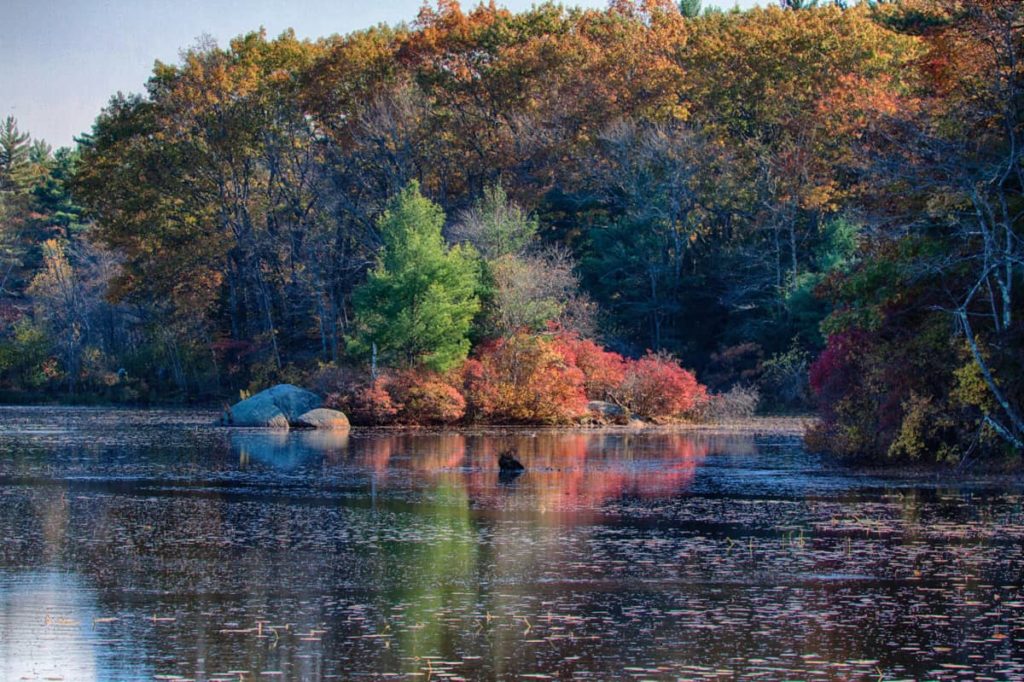
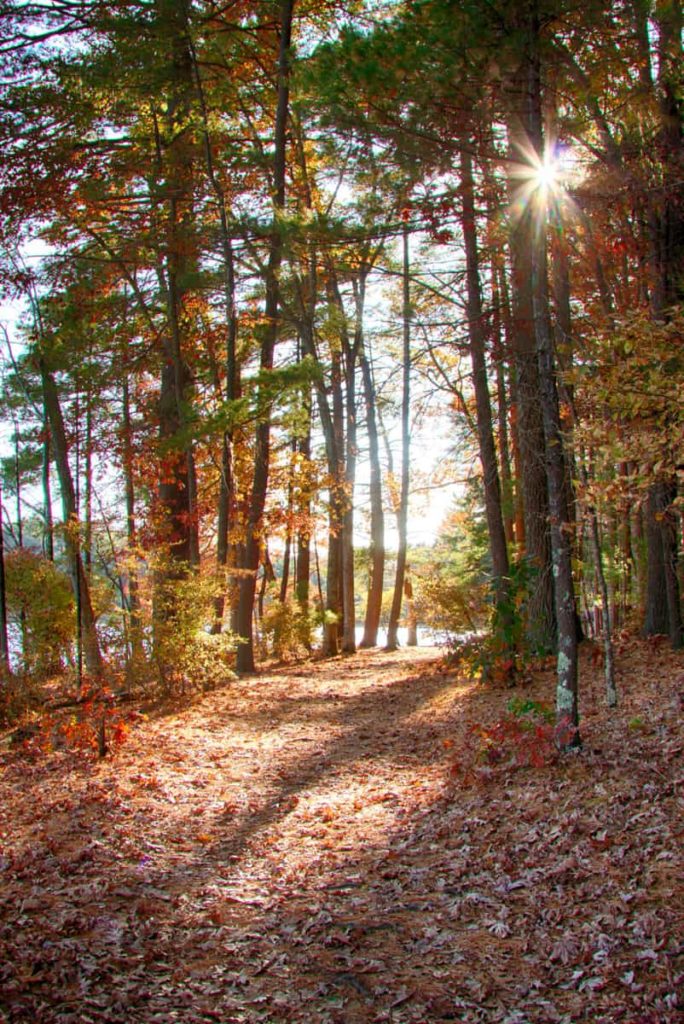
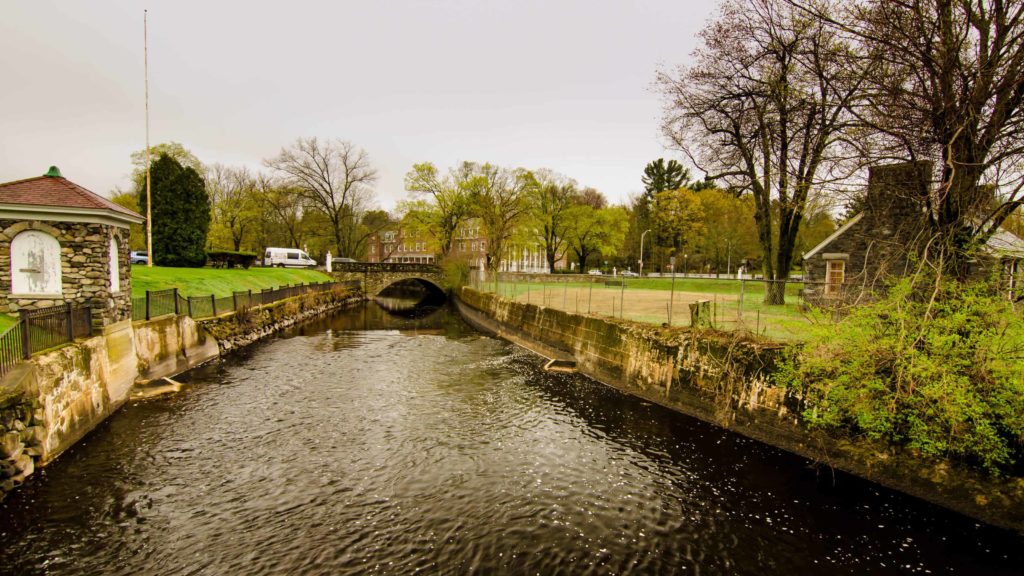


I’ve seen one source that names it Cochichawiche and says the incomers ‘purchased’ the land from Cutshamache, a leader in Massachusetts and of the Pennacook Confederacy, who spoke an Algonquin language.
And so in 1646, the Abbotts became some of the first white families to colonize and incorporate the town of Andover.
They did not live peacefully with the native nations who were living here long before they came. By 1646, the Pennacook, like the Wampanoag, had been decimated by European illnesses for generations. Relationships were more than strained. They turned to sustained conflict. George and Hannah lost at least one son.
Their house was “a fortified garrison, built about 1673-75,” where their European neighbors would come for protection … “‘The house was built of heavy hewn or sawed logs with the corners securely fastened, the eaves extending out over the walls by two feet or more, so that in case of attack, the defenders could fire down upon the enemy or pour water to put out a fire if started.’”
says ‘The garrison house was home to the family until 1704, when it was replaced by a structure which later became known as “The Old Red Abbot House.’
George and Hannah were New England puritans, and their descendants seem to have been Protestants, witnesses at witch trials, abolitionists and supporters of the Underground Railroad …
George has left at least one record in his own words, and part at least is an unusually warm tribute — he left all he had to his wife. He says in his will:
“Considering the great love and affection I bear unto my loving wife, Hannah Abbot, and also considering her tender love and respect she hath had to me and also considering her care and diligence in helping to get and save what God hath blessed us withal and also prudence in management of the same, I do therefore leave my whole estate to her.”
Hannah outlived him by 14 years, and she too left a will — an unprecedented achievement. “It is said to be the only will of the time on record in which a woman alone conveys real estate after the death of her husband.”
They both died in Andover.
And now you’re wondering — where were they born?
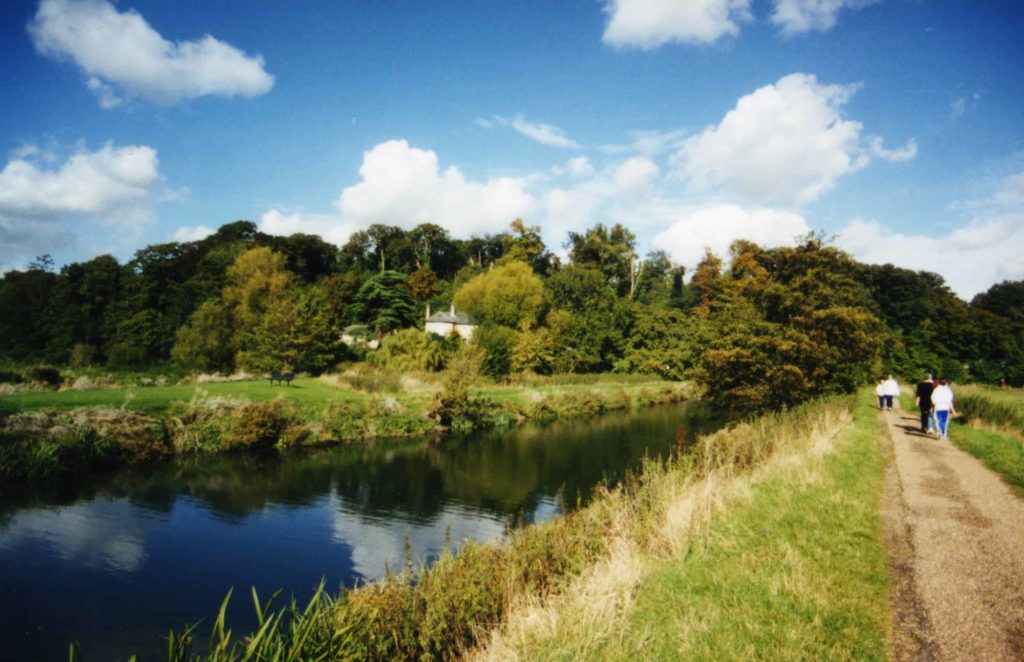
Clouds reflect in the water along the tow path to Ware. Creative Commons Courtesy Photo
George and Hannah both entered the world in … Bishop’s Stortford, Hertfordshire, England (United Kingdom).
Remember that name, because it’s about to become relevant for a century or so.
George III is the son of George II Abbott (before May 28, 1587 to ‘after 1628’) and Elizabeth Abbott (c. 1595 to ‘after 1628’). They were both born in Bishop’s Stortford, like his parents before them. Along with his three brothers, George II has at least two sisters, Joanne and Grace.
George II is the son of George Abbott ‘the elder’ (c. 1550 to ‘before January 11, 1619’) and Bridget Abbott (Wyllie) (February 1, 1552 to August 13, 1625). She was born in Thorley, Bishop’s Stortford.
George the elder was a Yeoman
They have at least seven familiarly named children — John Abbott, Anne Reeve, Joanne Abbott, Grace Abbott, George Abbott, Il, of Bishop’s Stortford, Johanne Fordham and Edward Abbott.
George the elder is the son of William Abbott (Janyar 1525 to March 12, 1569) and Margaret Abbott (c. 1529 to 1569). They too were both born in Bishop’s Stortford.
William married twice: Agnes and Margaret.
Margaret Abbot (Eliot), also called Margery, is the mother of George Abbott, ‘the elder’; Wynifred Abbott; John Abbott; Robert Abbott and Walter Abbott. Agnes does not have any children recorded here. So it may be that Agnes died young.
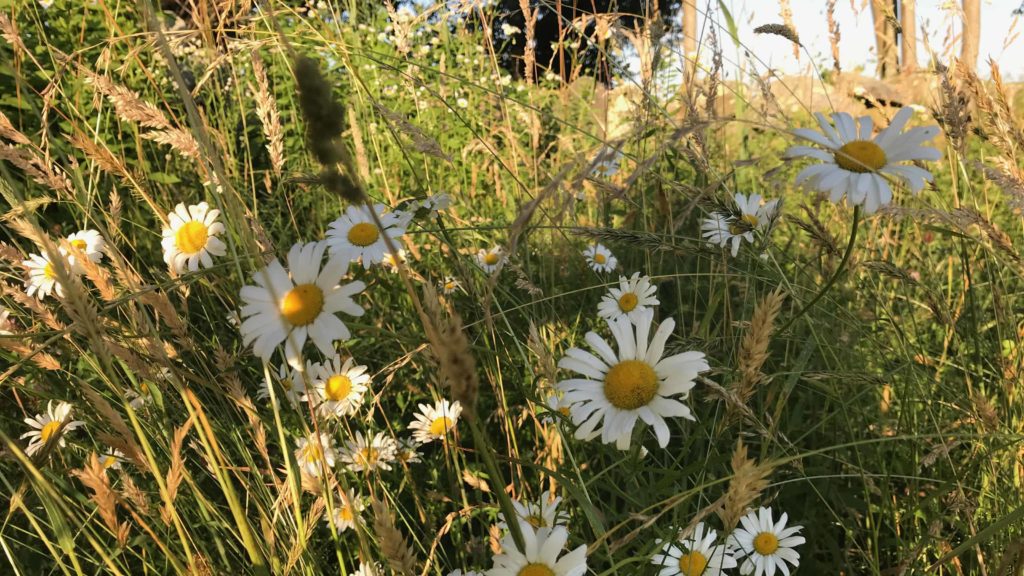
Daisies bloom in the hayfield.
William is the son of John Abbott (c. 1495 to 1545) and Margaret Abbott (Smith) c. 1495 to 1529.
And they again are both born in Bishop’s Stortford. They have three sons, John Abbott; William Abbott and Richard Abbott — sounding very noble and Norman.
John is the son of William Abbott (c. 1470 to November 21, 1532) and Mary Barton Abbott (Turman) (c. 1474 to 1500)
They are equally local on both sides. William was a church warden, and John may have been their only child, possibly because Mary was so young herself.
William is the son of Simon Abbot (1460 to 1540) and Alice Abbott (Walter) (1462 to 1538). They both lived to a respectable age for the time, and William had a brother, Thomas, and a sister, Marian.
And here we see some movement for the first time in awhile … but not toward Glen Dochart and Strathearn, not yet.
Simon was born in Suffolk, and he died in St. Edmunds.
He is the son of John Abbott II (c. 1435 to c. 1490) and Maria Abbott (Meadows) (born c. 1435) — John was also born in Suffolk, and he died in Baconsthorpe.
John II is the son of Sir John Abbott, Esq. (1381 to February 27, 1443) and Agnes ‘Agatha’ Abbott (Elmyre) (1390 to 1486 — she lived to be 95.)
John Esq. was a Mercer, a cloth merchant. He was born in Farthinghoe, Northamptonshire, and he may well have lived and worked in London, as Agnes was born there, in Middlesex, and she and he both died there. Along with one son, they had two daughters with the euphonious names of Alice Cotton of Landwade and Elizabeth Mauntell.
Sir John is the son of William Abbott (b. 1355) and Alice Abbott (Walter) (b. between 1320 and 1380) — probably in England.
So for now, that is as far back as the record has drawn. How and where we get from Northamptonshire to Strathearn … that will take some research from another direction, or a good long walk and a lot of hot jacket potatoes.
It’s the kind of exercise that can go on a long way in many directions. When I was looking up the north shore in the 1600s, I found a word from the people who lived there, and live there now, that holds the idea for me:
“Awikhigan is an Abenaki word which originally referred to birchbark maps and scrolls, but came to encompass letters, petitions, maps, books and works of art. In our time, this word extends to encompass our creations in digital space. … In the Abenaki sense, the book and website are part of a cycling or spiraling of ôjmowôgan (history), which refers to a process of telling a collective story, an ongoing activity in which we are engaged.”

